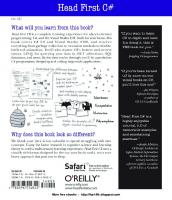Cromwell’s Head 9781780931333
Oliver Cromwell’s magnificent funeral in 1658 was a regal affair, witnessed by thousands and drawing on all the trapping
180 68 31MB
Pages [250] Year 2008
Recommend Papers

- Author / Uploaded
- Jonathan Fitzgibbons
File loading please wait...
Citation preview
*I *
Tyburn and Beyond
As DAY B R 0 K E on the cold winter's morning of Wednesday 30 January 1661, the crowds were already bustling around Tyburn gallows. Underneath the long shadow of the infamous 'Triple Tree', thousands would gather in anticipation of the day's events. This site, which had seen the death and destruction of so many criminals, was about to add a fresh chapter to its bloody history: the execution of Oliver Cromwell, Henry Ireton and John Bradshaw. Yet this would be no ordinary execution since all three of the condemned had been deceased for quite some time. Cromwell had now been dead for over two years; his sonin-law Henry Ireton had succumbed to a fever while on campaign in Ireland in November 1651; John Bradshaw, famous for his role as Lord President of the High Court of Justice that tried Charles I, passed away 15 months earlier in October 1659. Lying in their opened coffins, still wrapped in the cloths in which they had been buried, these 'three bold traitors' were drawn on sledges along [ 27 ]
* II *
On Show and On Trial
WHEN CROMWELL'S HEAD finally re-emerged towards the end of the eighteenth century, it found itself in the hands of a most unlikely owner. Samuel Russell was a failed comic actor who had turned to drink in his time of despair. Having few possessions, selling most of what he owned to fuel his habit, Russell led an impecunious life. Yet he did have one treasure to fortifY him against those evil times: the head of Oliver Cromwell. Russell would claim to be an ancestor of the Lord Protector, the head supposedly descending through generations of his family. Perhaps there is some truth in this. The Cromwell and Russell families were connected through a number of marriage alliances including the marriage of Oliver's fourth son, Henry, to Elizabeth, the daughter of Sir Francis Russell. How the head came to pass from Du Puy's cabinets of curiosities to the Russell family is unknown, but perhaps Oliver's 'relatives' were seen as a [ 60]
ON SHOW AND ON TRIAL
ready market for such a strange item following Du Puy's death in 1738. In any event, one cannot imagine the head coming into the ownership of anyone more contrary to Cromwell's own 'puritanical' demeanour. The head of a man who famously ordered the closure of alehouses, now found itself in the possession of a person who haunted taverns on a more than regular basis. Russell's treasured item did not escape detection, however. James Cox, one time owner of a large museum in London, had his eyes on this curious relic. Nowoperating as a jeweller in the City, Cox had a most precious commodity, in which Russell was distinctly lackingmoney. When Cox first clapped eyes on Russell, around the year 1780, he was exhibiting the head at a small ramshackle stall near Clare Market. Cox, immediately realizing the importance of what he saw, and sensing Russell's weak spirit, resolved to get the head for himself. According to a later account, Cox was: Struck particularly by the appearance of the embalmed head, and convinced by all the circumstances attached to it that it was the identical head of Oliver Cromwell, Mr. Cox offered Russell £roo for it; nevertheless, poor as he was, and considerably in debt, he refused to part with it, so dear to him was that which he knew to be the sacred relic of his great ancestor. l
Just how nostalgic Russell was about his item is uncertain. In his drunken bouts he would reputedly pass the [ 6r]
* III *
The Mind is the Man
THE VILE EVENTS that took place at Tyburn on 30 January 1661, launching Cromwell's head on its 300-year adventure, were a calculated act of punishment. Behind the blundering butchery was an intense hatred for what Cromwell and his allies had achieved during their lifetimes. Although, legally speaking, the crime for which they were posthumously executed was 'high treason', the underlying charge was the heinous, unthinkable act of king-killing. 'Regicide' was a most egregious sin: the murder of God's anointed monarch. It is unlikely that this fact escaped those who participated in the trial and execution of Charles I in 1649. Indeed, because of the personal risk, not to mention the political turmoil, that the king's execution might entail, it was a decision that was not taken lightly. It is too easy to be seduced by the postRestoration caricature of the power-hungry, hypocritical Cromwell. In reality, as we shall see, Cromwell only
*IV*
Warts and All?
How M U C H do we really know about the man behind the head? Who was the real Oliver Cromwell? So much bad press has clouded his reputation in the years since the Restoration that it is not easy to uncover an accurate picture of Cromwell in life. Oliver himself professed to live in a 'plain' style and dealt with people in the same forthright manner. It was while Cromwell sat for a portrait by Sir Peter Lely (see plate II) that he allegedly gave his now legendary advice to the painter: Mr. Lely I desire you would use all your skill to paint my picture truly like me and not flatter me at all. But (pointing to his own face) remark all these roughness, pimples warts
& everything as you see me. Otherwise I never will pay a farthing for it.l
In many ways, however, this image of Cromwell was just as 'false' as the demonic one created in the Restoration [137 ]
CROMWELL'S HEAD
period. Oliver Cromwell was never simply the puritanical caricature that he has often been made out to be. In reality, his personality displayed a number of traits, not just plain and godly but also humorous, loving and playful. He had both a complex upbringing and a happy family life. Behind the supposedly 'transparent' image that Cromwell himself sought to portray, lies a much more complicated character. Like his head in death, Oliver in life was subject to a number of dramatic changes in fortune. From years in obscurity to a prominent place in the public spotlight, Cromwell's tale was just as remarkable as the posthumous journey of his head. Likewise, when examining Cromwell's reputation, one needs to proceed with the same meticulous eye to detail as the cranial detectives who examined Oliver's head in the early twentieth century. Only by seeing through the veneer of 300 years oflegend can one truly understand Oliver in his own lifetime.
*
*
*
I was by birth a gentleman: living neither in any considerable height, nor yet in obscurity. Oliver Cromwell to Parliament, 12 September 1654
Contrary to Cromwell's words, for the first 40 years of his life he was indeed an obscure figure. Like the tate of his head during the late seventeenth and early eighteenth centuries, one can catch a brief glimpse of Cromwell in [138 ]
Cromwell Through the Ages
As CROMWELL'S HEAD peered over the roof of Westminster Hall in early 1661, the process of vilification was complete. The Restoration had witnessed the systematic character assassination of Oliver Cromwell. Admittedly, in his lifetime Cromwell had had his detractors; not everybody viewed him as a saint carrying out God's business. After 1660, however, this less than favourable portrayal had become the opinion of the majority. In print, image, song and finally in body, Cromwell was disinterred into the 'public sphere', becoming the subject of both ridicule and execration. He was portrayed as unrepentantly Machiavellian, totally devoid of religion and morality. His professions of godliness were a mere cover for his self-aggrandising ends. Some even attributed Oliver's success to the work of the devil. The fact he died exactly seven years after his famous victory at Worcester was seen by some as evidence of a demonic pact in which Oliver sold his soul for victory and seven whole years of power. [172 ]
*VI *
The Many 'Heads' of Cromwell
I TIS NOW 350 years since that fateful stormy afternoon of 3 September 1658. Yet even after the Lord Protector drew his final breath, he continued to exert his presence on the world he left behind. His paradoxical character and his remarkable achievements could still excite, engage, fascinate and infuriate people long after his death. In many ways the story of Cromwell's head and his posthumous immortality, even infamy, are closely intertwined. The fortunes of Cromwell's head perfectly reflect attitudes towards him through the generations. From post-Restoration desecration to early eighteenth-century obscurity, from late Victorian exaltation to twentiethcentury examination, both Cromwell's head and reputation have had a rollercoaster of a ride. The vile acts carried out on the bodies of Cromwell, Ireton and Bradshaw in January 1661 brought the late Lord Protector back into the public imagination. While [207 ]
CROMWELL'S HEAD
the bloodthirsty butchery of the gallows consigned his body to the oblivion of the common pit, it also set his head on its epic journey. The notoriety of a traitor's pole ensured that Cromwell's reputation would remain blackened for quite some time, but it helped people to remember him. By necessity, the disinterring of Cromwell and the continued afterlife of his head also aided the resurrection of interest in the man behind the head. Even while Charles I and Charles II lay dead and their bodies turned to dust, their arch-enemy, Cromwell, would live on both in body and memory. Through the ages, the visitors who attended the grisly peep-shows, such as Du Puy's museum, Samuel Russell's market stall, Cranch's Bond Street exhibition or Wilkinson's Victorian parlour were invited to gaze upon this unique relic and to think of its erstwhile owner (see plate 24). As time went on, the story behind the head fascinated just as much as the head itself. Perhaps the most intriguing, not to mention consistent, theme in the story of Cromwell's head is that of the attempts to conclusively prove it was genuine. The motives for those who wanted to prove the head's authenticity varied. For some it was purely down to greed; James Cox, John Cranch and the Hughes brothers all sought to verifY the head's provenance in order to make money from it. For others it was a matter of antiquarian or scientific curiosity; from the musings of the curator of the Ashmolean Museum and the sympathetic examination of the Royal Archaeological Institute through to the rigorous [ 20S}
Notes on the Text
Introduction
13 The True Manner ofthe most Magnificent Con'Peyance ofhis Highnesse Effigies (London,
1
British Library, Additional MS. 43724 £0. 45.
2
N.PENNy(ed.),TheJournal ofGeorge Fox (London,
3
T.BIRCH
1924), p.173·
4 5
(ed.),ACollection ofState Papers ofJohn Thurloe
IS
(7 vols., London, 1742), vii, PP·3S4-6. Ibid., vii, PP.363-4. Ibid., vii, P.369. Ibid., vii, PP.372-3. Ibid., vii, P.367.
16 C.H. FIRTH (ed.), Memoirs ofEtlmund Ludlow (2 vols, Oxford, 1894), ii, PP.47-8. 17 A. COWLEY,A Vision,
6 7 8 The Publick Intelligencer, 141, PP·794-6.
9 Calender ofState Papers, Venetian I657-9, P.248. 10 P. GAUNT, (ed.), The Correspondence ofHenry Cromwell, I6ss-I659: British Library Lansdowne Manuscripts, Camden Society, Sth series, xxxi (2007), P·410. II
16S8),p.8. 14 M.M. VERNEY, Memoirs of the Verney Family (4 vols., London, 1925), ii, P.130.
The Publick Intelligencer,
The Publick Intelligencer, 152, P·7.
Concerning the late Pretended Highnesse Cromwell (London, 1661) p.2. 18 E. BURROUGH, A Testimony
Against a Great Idolatry (London, 1658) p.2. 19 The National Archives, sPI8/183, fo. 191V. 20
The Publick Intelligencer, 152, pp.21-3.
21 BURROUGH,p-S. 22 G. WITHER, Salt upon Salt (London, 1659) p.18. 23 H. FLETCHER, The Perfect
Politician Or, A Full View of the Life and Action ... Of
142, p.816; 147, p·912. 12. Ibid., 148, pp.917-19. 220 ]
Further Reading
Printed Editions of Primary Material The Writings arid Speeches ofOliver Cromwell (4 vols, OUP reprint, 1989). E.S. BEER (ed.), The Diary of John Evelyn (6 vols, OUP,
W.C. ABBOTT,
1955). T. BIRCH (ed.), A Collection of
the State Papers ofJohn T'hurloe (7 vols, London, 174-2). T. CARLYLE, The Letters and Speeches of Oliver Cromwell, ed. S.c. LOMAS (3 vols, Methuen & Co., 1904). C.H. FIRTH (ed.), Memoirs of Edmund Ludlow (z vols, Clarendon Press, 1894). C.H. FIRTH (ed.), The Clarke Papers (4 vols, Camden Society, 1891-1901). S.R. GARDINER (ed.), The
Constitutional Documents ofthe Puritan Revolution, 1625-60, (3rd edn, Clarendon Press, 1906).
J. NICKOLLS (ed.), Original Letters and Papers ofState ...
addressed to Oliver Cromwell (London, 1743). N. PENNY (ed.), TheJournalof Ge01;ge Fox (Dent, 1924.). J.T. RUTT (ed.), The Diary of Thomas Burton Esq., (4 vols, Henry Colburn, London, 18z8).
WL. SACHSE (ed.), The Diurnal afThomas Rugge, 1659-r1561 (Camden Society, 1961).
Secondary Material M. BRIGHT andH.B. WHEATLEY (eds.), TheDiary ofSamuel Pepys (10 vols., George Bell & Sons, 1893-99) B. COWARD, Oliver Cromwell (Longman, 1991). B. COWARD, The Cromwellian Protectorate (Manchester University, Z002). rC. DAVIS, Oliver Cromwell (Arnold, ZOOS). A. FRASER, Cromwell Our Chief ofMen (Phoenix, Z002). S.R. GARDINER, History ofthe
[ 228
J
Picture Credits The publishers would like to thank the following for permission to reproduce their material, Every care has been taken to trace copyright holders, but we will be happy to rectifY any omissions in future editions, PLATE NUMBERS 0 I Scottish National Portrait Gallery, Edinburgh, Scotland / Bridgeman Art Library 02 © Crown copyright, The National Archives, TNA SP 29/23 f,70 03 © Museum of London, UK/Bridgeman Art Library 04- © Museum of London, UK/Bridgeman Art Library oS © Crown copyright, The National Archives, TNA SP 77/33 f, 14-6 06 Karl Pearson et ai" 'The Wilkinson Head of Oliver Cromwell and its Relationship to Busts, Masks and Painted Portraits', Biometrika, December 1934-, 26, plate 14-, by permission of Oxford University Press 07 Karl Pearson et ai" 'The Wilkinson Head of Oliver Cromwell and its Relationship to Busts, Masks and Painted Portraits', Biometrika, December 1934, 26, frontispiece, by permission of Oxford University Press 08 © Crown copyright, The National Archives, TNA SP 16/517 f,I 09 © Crown copyright, The National Archives, TNA SP 16/517 f,I3 010 © Crown copyright, The National Archives, TNA SP 16/517 f,I6 o II © Birmingham Museums and Art Gallery/Bridgeman Art Library 012 © Crown copyright, The National Archives, TNA SP 63/281 .13 By permission of the Master and Fellows of Sidney Sussex College, Cambridge 014- Karl Pearson et ai" 'The Wilkinson Head of Oliver Cromwell and its Relationship to Busts, Masks and Painted Portraits', Biometrika, December 1934-, 26, plate VI, by permission of Oxford University Press 0 IS By permission of the Master and Fellows of Sidney Sussex College, Cambridge 0 16 Karl Pearson et ai" 'The Wilkinson Head of Oliver Cromwell and its Relationship to Busts, Masks and Painted Portraits', Biometrika, December 1934-, 26, plate XXXIII, by permission of Oxford University Press 017 By Kind Permission of The Trustees of the Chequers Estate / Mark Fiennes / Bridgeman Art Library 0 18 Karl Pearson et ai" 'The Wilkinson Head of Oliver Cromwell and its Relationship to Busts, Masks and Painted Portraits', Biometrika, December 1934-, 26, plate LXXXIII, by permission of Oxford University Press .19 The Cromwell Museum, Huntingdon 020 © Crown copyright, The National Archives, TNA E4-07/182 021 © Crown copyright, The National Archives, TNA SP 27/2 022 The Great Seals of England, Alfred Benjamin Wyon, published by Elliot Stock, London 1887 (Plate 33) 0 23 By permission of the Master and Fellows of Sidney Sussex College, Cambridge (courtesy of Charlotte Rogers) 0 24- By permission of the Master and Fellows of Sidney Sussex College, Cambridge
[ 239 ]









